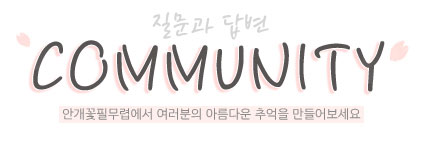Comprehending Agile Style: The Secret to Effective Item Growth
페이지 정보
작성자 Ava 작성일25-01-01 01:24 조회22회 댓글0건관련링크
본문
 That's where Agile Style comes right into play. Agile style refers to the repetitive procedure of item development, highlighting adaptability, cooperation, and client comments throughout the whole cycle.
That's where Agile Style comes right into play. Agile style refers to the repetitive procedure of item development, highlighting adaptability, cooperation, and client comments throughout the whole cycle.Agile style is a core principle of the Agile methodology, which stemmed in the software program industry yet has considering that been used throughout different domains, consisting of product design, design, and also advertising. The significance of Agile design depends on its capability to create products that not only fulfill individual needs yet likewise react to changes swiftly and efficiently, providing the versatility to adapt as new understandings emerge.
The Principles Behind Agile Design
At its core, Agile layout operates on a number of essential principles that establish it apart from conventional design procedures. One of the essential aspects is step-by-step development. Rather of waiting until the end of the project to release a full product, Agile layout breaks the procedure into smaller sized portions, delivering functional models at each phase. This allows groups to gather feedback early, which can be incorporated right into the following version, boosting the end product's top quality and usability.
Another essential concept is partnership. Agile layout promotes close interaction between all team members, consisting of developers, programmers, and stakeholders. This continuous exchange of concepts and feedback ensures that every person is aligned and that the project continues to be on track. By functioning in brief cycles, Agile design promotes adaptability in making modifications based on input from numerous resources, whether it's the growth team, customers, or users themselves.
Furthermore, Agile style highlights customer responses as a driving pressure for product advancement. With each version, customer input is important to improving the item's attributes and functionality. This technique ensures that the last product not only fixes the desired problem but also lines up with user expectations and desires.
Benefits of Agile Design
Taking on Agile layout provides numerous advantages that contribute to an extra efficient and efficient advancement process. One of one of the most significant benefits is faster time to market. Considering that Agile layout operates in smaller increments, teams can launch variations of the item quicker, collecting comments and making enhancements without waiting on a lengthy, end product launch. This suggests businesses can launch products or updates quicker, giving them with an affordable side out there.
One more benefit is enhanced item quality. By constantly checking and refining the item throughout its development, the likelihood of discovering and dealing with prospective issues increases. This iterative process assists lower the danger of costly errors or major layout problems that may have been overlooked in a typical development cycle.
Agile design also improves risk monitoring. With constant comments and a versatile strategy, teams can detect possible threats early and adjust their strategies appropriately. This proactive strategy permits for quicker feedbacks to unforeseen obstacles and minimizes the effect of these threats on the total project.
Agile Style in Practice
To execute Agile design successfully, groups must stick to a few vital practices. One such practice is using customer stories, which describe the product's functionality from the individual's perspective. This assists prioritize functions based on user needs and ensures the group focuses on what's crucial to the end customer.
Additionally, sprints are a main component of the Agile procedure. At the end of each sprint, the team provides a working variation of the product, which can be examined by stakeholders for feedback.
Routine standup meetings are one more vital facet of Agile design. These quick, day-to-day meetings enable staff member to share updates, discuss any type of barriers, and make certain that everyone gets on the very same page. This assists preserve momentum throughout the job and makes certain that prospective troubles are addressed prior to they can hinder progress.
Obstacles of Agile Design
While Agile style supplies numerous benefits, it's not without its obstacles. One common concern is handling stakeholder expectations. Because the procedure is iterative and might involve regular modifications, stakeholders may at first struggle to understand the developing nature of the project. To conquer this, reliable interaction is necessary to maintain all events educated and lined up with the job's objectives.
Another difficulty is the capacity for extent creep. Because Agile style enables adaptability and modifications throughout the procedure, there is a danger that the range of the project may grow past its original intentions. To avoid this, it's vital to keep a clear vision and established realistic goals from the start.
Agile design calls for a high degree of team cooperation and discipline. Since the procedure entails constant comments and constant changes, it can be requiring for teams to preserve a consistent pace and keep the job on the right track. With appropriate preparation and dedication, these obstacles can be managed properly.
Conclusion
Agile design is an effective method that brings adaptability, partnership, and continual renovation to item development. By damaging down tasks right into convenient models and focusing on individual comments, Agile style makes certain that products satisfy user needs and are provided swiftly. While there are obstacles to conquer, the advantages of faster time to market, boosted item top quality, and much better danger management make it a highly effective approach for modern product advancement.
By accepting Agile layout, organizations can remain affordable in an ever-changing market, delivering items that are not only practical yet also lined up with individual assumptions. Whether you're making software program, items, or solutions, Agile style offers the devices to develop cutting-edge and effective end results.
Agile layout refers to the iterative procedure of item growth, stressing adaptability, collaboration, and consumer comments throughout the entire cycle. At its core, Agile style runs on numerous essential concepts that establish it apart from typical style processes. Instead of waiting until the end of the project to introduce a complete product, Agile design breaks the procedure into smaller sized pieces, delivering useful prototypes at each stage. Given that Agile layout functions in smaller increments, groups can launch variations of the product more swiftly, gathering responses and making improvements without waiting for a lengthy, last product launch. By breaking down jobs right into manageable versions and focusing on individual responses, Agile style ensures that items satisfy user demands and are provided rapidly.
댓글목록
등록된 댓글이 없습니다.









